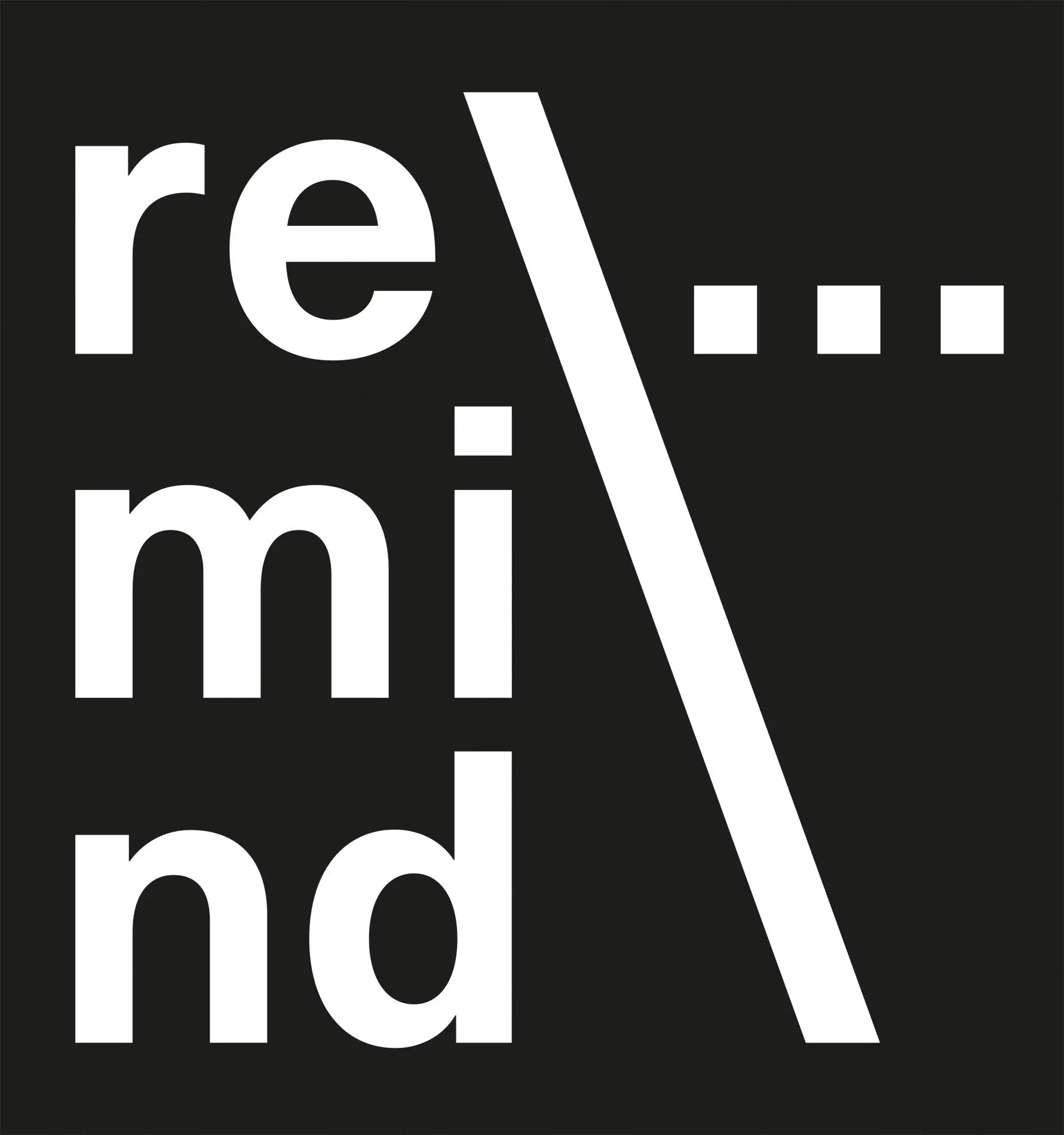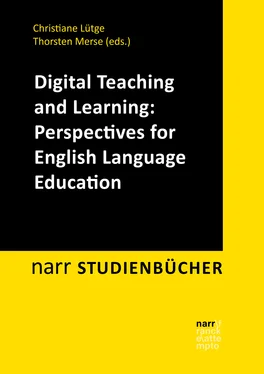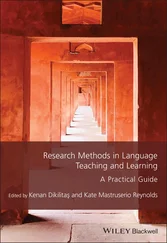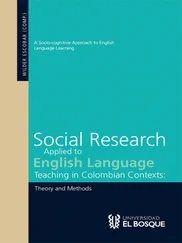 Digital media and educational functions
Digital media and educational functions
Practice: Using digital tools to rehearse grammar, vocabulary, or pronunciation.
Information: Using digital sources to research, collect and evaluate new information and knowledge, or discover topical issues.
Communication: Using digital tools to communicate and interact with people (e.g. other learners, teachers, or people from other countries).
Presentation: Using digital tools so that learners can display results and products of their work, or teachers can introduce and explain new content.
Collaboration: Using digital environments that faciliate learners working together on a shared outcome.
Reflection: This aspect means that digital media themselves become a subject of reflection, supporting learners in critically reconsidering the roles and effects of media in their own lifeworlds and in society (e.g. when filtering knowledge and information only confirms, but never challenges one’s worldviews, leading to people living in their own ‘filter bubbles’ or ‘echo chambers’).
(cf. Schmidt & Strasser 2018)
myth of a homogeneous digital competenceThird, we encourage in-service and student teachers not to be discouraged by an alleged digital divide which posits that “the younger generation is more technologically adept than its elders” (Dudeney, Hockly & Pegrum 2013: 10). This is reflected in the term ‘digital natives’ (ibid.) used to describe younger people who are growing up with ever-new technological advancements, and hence, seem to naturally absorb all digital skills necessary to navigate digital worlds. On the opposing end, such a problematic assumption positions teachers, say, as digital newcomers who do not have a similar command of digital technologies and skills. Together with Dudeney, Hockly and Pegrum, we want to trouble this digital divide. On one level, “a homogeneous, digitally able generation is a myth” (2013: 10) and digital mindsets, interests, uses and skills also vary among young people. On another level, many teachers do possess comprehensive digital repertoires – and if they do not, they can always develop these in their own continuous life-long learning. The most important issue, however, is that just because young people might be more technologically adept does not automatically mean that they know how to use digital resources for educational purposes and their own learning. Here, of course, skilled teachers come into play to use their pedagogical expertise and point out to learners the value of digital tools for learning. Again, this stresses the need for constant dialogue and for an awareness of the dynamic learning potentials inherent to digital technologies and resources.
 “Children and young adults are growing up in a world where digital technologies are ubiquitous. They do not and cannot know any different. This does not mean, however, that they are naturally equipped with the right skills to effectively and conscientiously use digital technologies” (Redecker 2017: 12). Discuss this statement and identify what younger learners still need to learn even though they are growing up in a digital world.
“Children and young adults are growing up in a world where digital technologies are ubiquitous. They do not and cannot know any different. This does not mean, however, that they are naturally equipped with the right skills to effectively and conscientiously use digital technologies” (Redecker 2017: 12). Discuss this statement and identify what younger learners still need to learn even though they are growing up in a digital world.
digital flexibilityAll impulses and ideas offered above served the purpose of tuning you in to the trajectories of this work and study book: connecting digital teaching and learning with English language education in dialogic and dynamic ways. This requires what we would like to term digital flexibility . In educational settings this should encompass reflectivity and a general awareness for the necessity to adapt to rapidly changing conditions for learning and teaching languages.
With this introduction, you have begun engaging in critical and productive reflections, discussions and considerations – and many pathways will have opened up that need deeper exploration and discovery. All contributions collected in this edited volume will now carry this initial engagement of yours further and offer manifold digital perspectives on teaching and learning English as a foreign language. To frame your reflective engagement, we would like to alert you to some specific interactive features of this book:
features of this bookWarm-up: Each contribution begins with a set of impulses that are meant to introduce you to the topics in question, to activate your prior knowledge, and to build up your expectations to the content that is to come.
Engagement icons and box elements: Throughout each article, you will find additional elements that offer definitions, further information, reflection points, exercises, and checklists.
Follow-up and reflection: All authors end their article with a set of further tasks and questions for you to continue the dialogue with other students or teachers, to engage in deeper reflective activities, or to find ideas for your own research.
Commented suggestions for further reading: Each article is rounded off with recommendations for research and practice-oriented publications that you can use to carry your interest in a topic further.
To provide a structure for your dynamic and dialogic engagement with the work and study book at hand, we put forward a division into two main thematic sections, each filled with corresponding chapters.
structure and content of this bookThe first section presents and interrogates the Digital Dynamics of Language Learning and Professional Development. The authors contributing to this section agree on the potential that digital innovations hold in store for the language development of learners, and they locate the usefulness of these innovations within the professional growth and expertise of English teachers. Christiane Lütge, Thorsten Merseand Xiaoli Suopen this section with the very fundamental question of what it means for English language educators to be digitally competent. To address this question, they present the European Framework for the Digital Competence of Educators and explain its orientational function for teachers who are seeking to integrate digital competence into their professional repertoire. Their contribution continues to provide reflection opportunities by means of an empirical study that was conducted with pre-service teachers on their competences and attitudes in the context of digital education. In the second contribution, Susanne Heinzexplores the design of mobile learning scenarios with digital tools. She provides timely insights into current research to develop definitions and theoretical frameworks associated with mobile language learning. A practice-oriented discussion of teaching principles addresses two key questions: How can mobile learning be best implemented in the classroom, and what is the role of the teacher in mobile language learning scenarios? With this, she leads into presenting concrete mobile learning scenarios that foster language learning competences. The following article by Thomas Strasserzooms in on artificial intelligence (AI) as a cutting-edge and increasingly evident phenomenon in digital English language teaching and learning. By also employing a critical lens, he teases out the potentials and implications, but also the uncertainties and imperfections that are associated with AI. He presents concrete digital applications and educational examples employing artificial intelligence in order to reflect on principles such as deep learning, feedback, and the role of the teacher. He concludes with a reflection on fostering digital literacies vis-à-vis AI. Maria Eisenmannuses the fourth contribution to this book to connect the large-scale challenge of differentiation with the potentials of digital technologies and resources to achieve more differentiated and invidualized teaching and learning. She sketches out how to frame learning processes digitally so that they become more cooperative, self-directed and student-centered. Practical issues explored in this article include adaptable and adaptive software, blended learning and flipped classrooms, Web 2.0 tools, virtual and artificial realities as well as gamification. The last contribution to the first section comes from Annika Kolb, who takes on the specific perspective of digital teaching and learning in the primary EFL classroom. She presents convincing reasons to advocate the use of digital media in primary education, where the turn towards the digital often meets controversy. It will become clear that digital media can contribute immensely to developing communicative, cultural and media-related competences at primary level, in particular when the linguistic competences of young EFL learners are still limited. Concrete examples for the classroom as well as a reflection of frequent challenges of media usage round off Kolb’s insights into the digital dynamics of primary EFL education.
Читать дальше

 Digital media and educational functions
Digital media and educational functions










